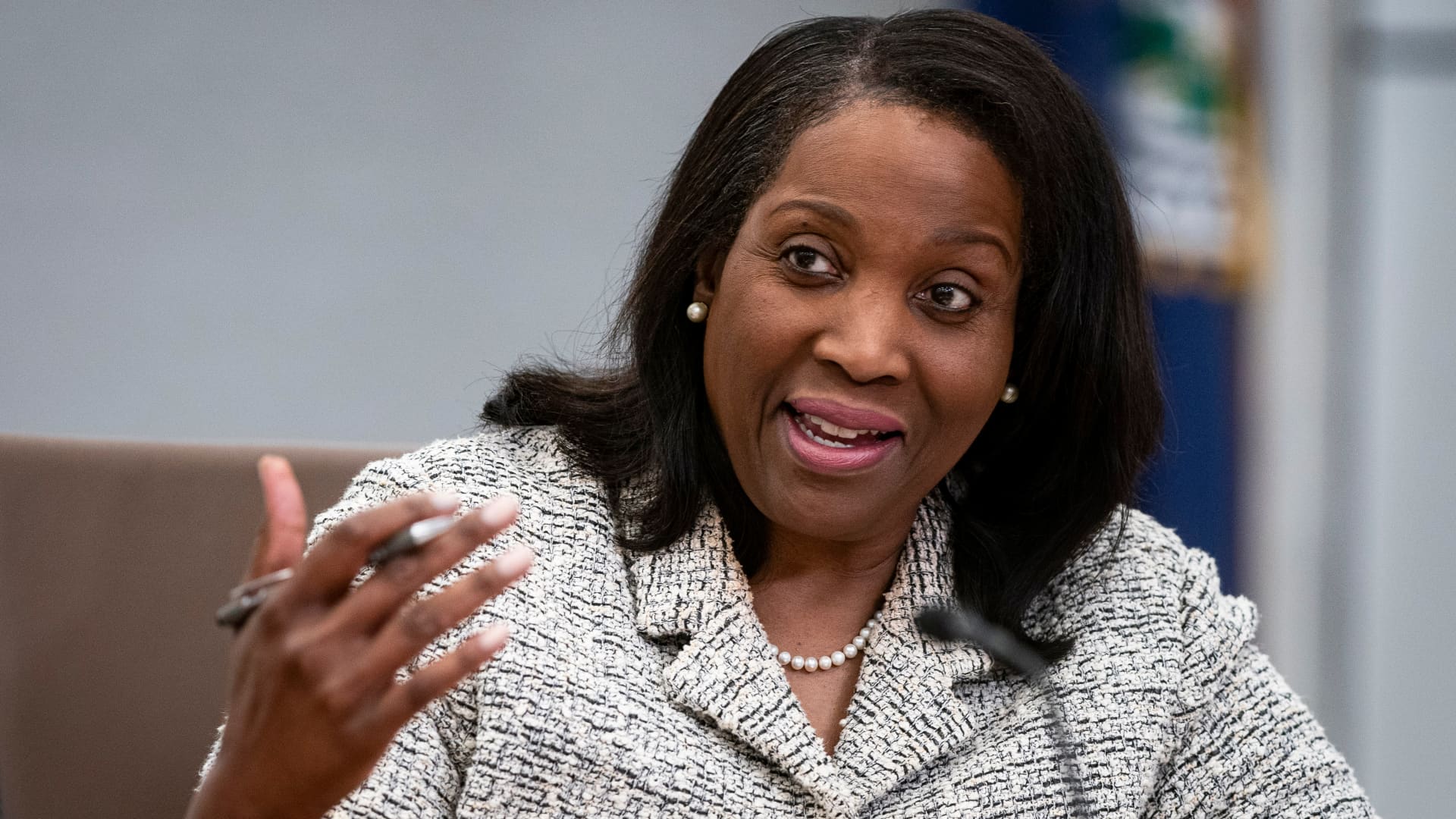Federal Reserve Governor Lisa Cook expressed concern Tuesday with the progress on inflation, saying recent lower readings could reverse after tariffs work their way through the economy.
In addition, Cook said she expects President Donald Trump’s moves on trade policy could take a toll on the labor market, though she noted that the economy for now is in relatively good shape.
“I do not express views on the Administration’s policies. But I do study the economic implications, which appear to be increasing the likelihood of both higher inflation and labor-market cooling,” the policymaker said in a speech to the Council of Foreign Relations in New York.
On inflation, Cook noted that progress has been made, with core inflation at 2.5% and headline at 2.1% in April, according to a report last week that uses the Fed’s preferred measure.
However, economists largely expect the tariffs to push costs higher. Fed officials generally view tariffs as one-off occurrences for prices, but the broad range of the Trump levies could change the equation.
“Price increases tied to changes in trade policy may make it difficult to achieve further progress in the near term,” Cook said. “The recent post-pandemic experience with high inflation could make firms more willing to raise prices and consumers more likely to expect high inflation to persist.”
Indeed, a survey-based measure of inflation points to a significant spike over the next year. Market-based measures, however, indicate more muted expectations further out.
Cook’s comments come two weeks ahead of the Fed’s next policy meeting on June 17-18. Market expectations overwhelmingly indicate the central bank will be on hold again regarding interest rates, and most statements from policymakers since the last meeting back that up. Traders expect the next Fed cut to come in September.
Cook did not specify when she thinks the Fed can ease again, saying that current policy is set in a place where she and her colleagues can respond to threats on either side of the Fed’s mandate for full employment and low inflation.
“I see the U.S. economy as still being in a solid position, but heightened uncertainty poses risks to both price stability and unemployment,” she said. “When making decisions, I think it has been valuable to remain a student of economic history. Our recent past has provided some useful lessons for decision-making during periods of high uncertainty and elevated risks to our dual-mandate goals.”
Earlier in the day, Atlanta Fed President Raphael Bostic said he expects just one rate cut this year as “most of the [inflation] measures are still flashing red.”
However, in a speech over the weekend, Governor Christopher Waller said he expects tariffs to be on the lower end of expectations, with impacts in the second half of the year that nonetheless could allow the Fed to enact “good news” rate cuts before the end of 2025.

 Economics1 week ago
Economics1 week ago
 Blog Post6 days ago
Blog Post6 days ago
 Economics1 week ago
Economics1 week ago
 Accounting1 week ago
Accounting1 week ago
 Personal Finance1 week ago
Personal Finance1 week ago
 Economics7 days ago
Economics7 days ago
 Personal Finance1 week ago
Personal Finance1 week ago
 Finance1 week ago
Finance1 week ago









